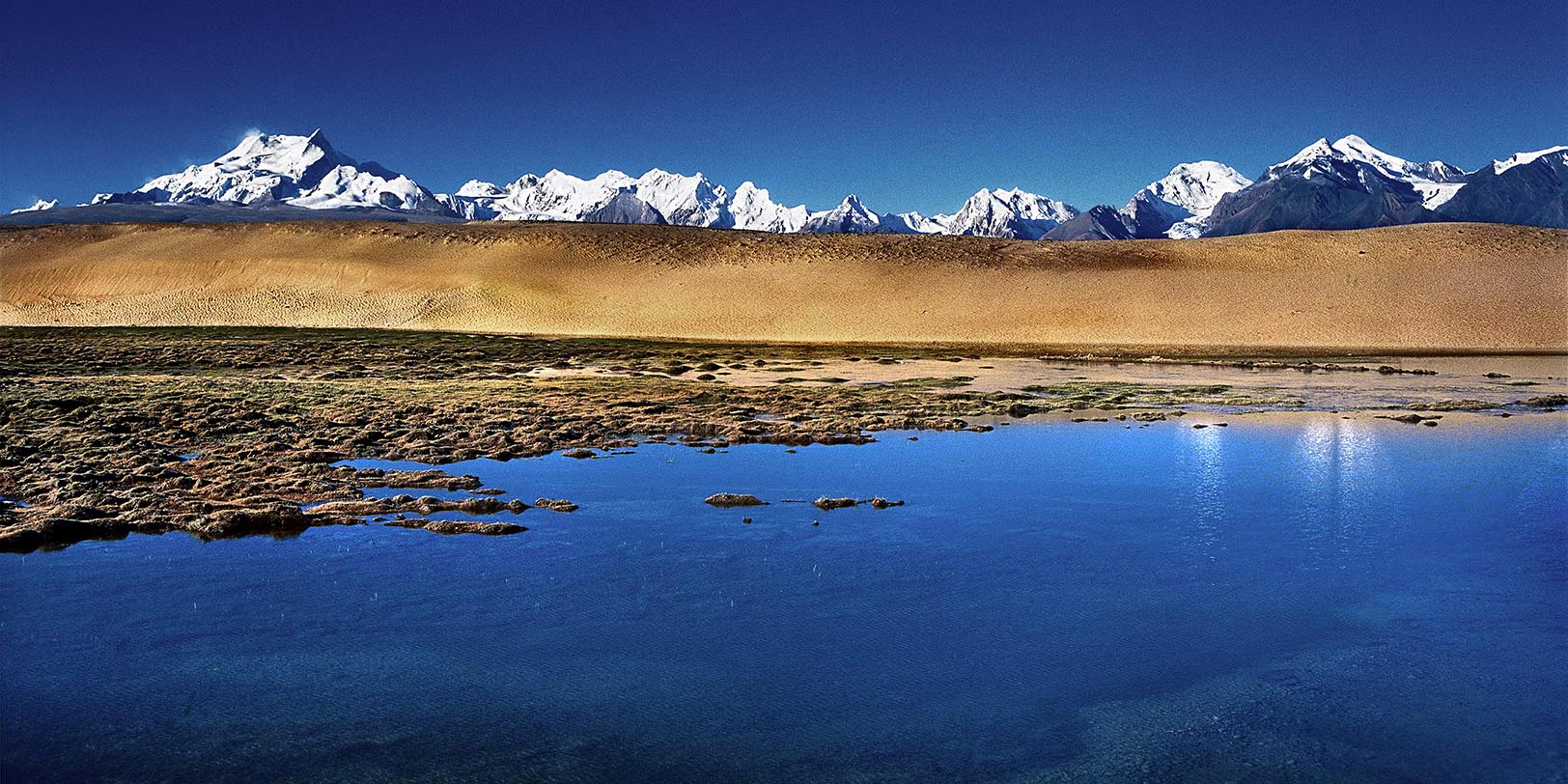
Between dream and reality, men’s water
Water is the perfect embodiment of the ideal of purity.
The water from the roof of the World, born of eternal snow and inaccessible peaks, is of perfect, divine purity.
All the peoples of the Himalayas, whatever their beliefs, worship the water of the mountains. All of them practice the pilgrimage to a lake, a spring, a river or a confluence.
Despite this universal attachment to water purity, men have not collectively managed to achieve satisfactory management of this resource.
The shortage of supply, insufficient or no treatment of waste water and industrial waste, and pollution of the banks that have become dumps, mean that the water situation in the cities and bazaars of the Himalayas is often catastrophic.
This paradox of human behaviour seems to mirror the ambivalence of water: in turn generous, enriching and nourishing but also wild, devastating and deadly.
Water feeds dreams, but also feeds nightmares.
To learn more…
The Himalayan chain, fractured by deep gorges and inaccessible ridges has led to fragmented human colonisation. Across the chain, there are dozens of ethnic groups. Each valley, each village constitutes a unique piece of this human mosaic made up of a great diversity of faces, languages, costumes, jewellery, customs and beliefs.
Water is a useful tool for putting some order in this confusing human kaleidoscope.
There are those who immerse themselves completely in water; those who sprinkle a few drops on the head and in the mouth; those whose ashes, after cremation, are carried away by a stream while others scatter them in the wind …
In this way water is an element which makes it possible to differentiate two main categories of population: the Hindus originating from the plains, and the Buddhists coming from the mountains.
It is within the Hindu populations that the relationship with water is the most complex and the most discriminatory. An individual cannot share water with a member of another caste whom they consider to be less pure. This obsession with purity leads caste members to share water only with their peers.
These divisions about purity are disappearing in the modern world, but needs are multiplying, and the uses of water becoming more diverse.
Because of its potential for development, water is increasingly at the heart of the concerns of the Himalayan peoples.
These multi-ethnic societies are faced with a major challenge: learning to collectively manage this precious resource which is coveted by all. Indeed, the contradictory interests of the great regional powers reinforce the geostrategic importance of the Himalayas, this priceless Water Tower of Asia.
Nourrir l’imaginaire
Nos objectifs sont de donner à voir la beauté du monde et ré-enchanter le regard sur cette ressource vitale qu’est l’Eau. Notre souhait est d’utiliser cette approche esthétique pour mettre la sensibilité du lecteur au service de la cause de l’Eau. Notre travail se veut également une ode à l’extraordinaire adaptabilité des humains, à leur courage et à leur détermination à vivre dans des environnements aussi hostiles.
Feeding the imagination
Our goals are to show the beauty of the world and to give a fresh view of this vital resource that is Water. Our aim is to use an aesthetic approach to help the reader become sensitive to the cause of Water. Our work is also homage to the extraordinary adaptability of humans, their courage and their determination to live in such hostile environments.


